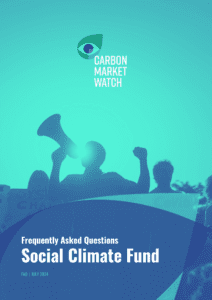EU Green Deal at the heart of post-corona Europe
Dear friends,
Our leaders are hoping to clinch a deal in the coming weeks on the EU’s financial recovery package and the multi-annual budget. In September, we expect the European Commission to announce its proposal for an improved 2030 climate target. The science says that Europe needs to reduce carbon pollution by 65% in order to make a fair contribution to averting the worst impacts of the changing climate (also the position of lawmaker Jytte Guteland who leads the work on the EU Climate Law file at the EU Parliament).
The two policymaking processes are inherently linked and can positively reinforce one another. Policies and measures that create jobs and stimulate the economy can allow for steeper emission reductions. An ambitious, legally binding, climate target creates investment certainty for the crucial decisions that need to be made today. Ramping up climate action in the short term will allow for a more gradual pathway to climate-neutral EU by 2040. It will help create new, green, jobs and lower pollution. This will improve health, make cities and buildings more liveable and thus increase the well-being of citizens.
With the national energy and climate plans, governments have an opportunity to turn the EU Green Deal into tangible actions while involving citizens and other stakeholders in the climate transition. Almost all of the member states have submitted their final plans, and the question now is, how will the higher 2030 target impact them? The policies and measures in these plans are likely not enough to meet the current climate targets, let alone the higher ambition set out under the Green Deal. This makes their upcoming review in 2023 all the more important. A key task for us and our PlanUp project now is also to ensure that governments do not use the Covid-19 pandemic as an excuse to weaken the plans.
With the higher target, all relevant climate and energy legislation will also be revamped. This includes the EU’s carbon market which must finally start driving emission reductions from heavy industry. Too often, the discussion around industrial climate action is reduced to one issue: the (hypothetical) risk of carbon leakage. To address this shortcoming, we recently brought together policymakers, NGO representatives and experts on the steel and cement sectors for an insightful exchange on the opportunities for and barriers to the clean industrial transformation. The conclusion was clear: carbon pricing alone is not enough to clean up Europe’s big polluters. A mix of policies and measures – including a high enough carbon price and ending free allowances – are needed to drive energy efficiency and a technology shift. We will continue to participate in this discussion and help amplify voices that give a more hopeful and nuanced picture of the state of our industry and its ability to change.
- Article: “Conservative” EU carbon market alone will not drive the clean industrial revolution
- Article: Towards more sustainable and transparent investments?
- Article: The EU ETS – carbon pricing as an important tool to achieve the objectives of the Green Deal (first published in ECA Journal)
- Article: More climate action through better planning
- Publication: Carbon Market Watch response to the public consultation on the EU 2030 climate target






